#Thimonnier
Photo
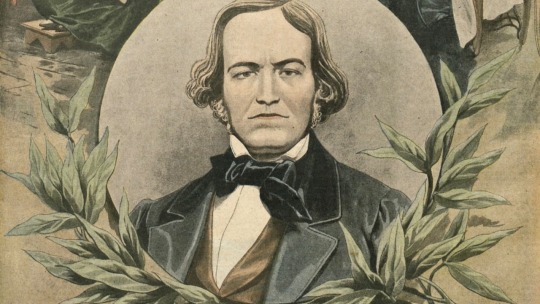
5 juillet 1857 : mort de Barthélemy Thimonnier, inventeur de la machine à coudre ➽ https://j.mp/2WE3SwT Les broderies au crochet que les fabriques de Tarare, dans les montagnes du Lyonnais, faisaient exécuter dans les montagnes du Lyonnais et du Forez lui suggérèrent l’idée de construire une machine pouvant à la fois broder les étoffes et coudre les vêtements
#CeJourLà#5Juillet#Thimonnier#Inventeur#Machine#Coudre#Couture#Inventions#Broderie#Vêtements#Étoffes#Tissus#Biographie#histoire#france#history#passé#past#français#french#news#événement#newsfromthepast
4 notes
·
View notes
Photo

On this day, September 10, in 1846, the Massachusetts machinist and inventor Elias Howe, Jr. (1819-1867) was awarded U.S. Patent 4,750, the first United States patent for a sewing machine using a lockstitch design.
Others had proposed and even manufactured designs for mechanical sewing apparatus, beginning with a German immigrant to London, Charles Weisenthal, who, in 1755, patented a needle to be used in such a machine, though he proposed no machine with which to pair it. Others would soon follow, though their machines similarly were incomplete or suffered design faults that prevented them from working well enough to be put to practical use.
The French inventor Barthélemy Thimonnier invented a machine that was patented by the French government in 1830, and within ten years was operating a factory with 80 machines sewing uniforms for the French army. But Thimonnier’s factory was destroyed by Parisian tailors who feared that his machines would put them out of work. Despite repeated efforts and new patents for improvements to his machine in 1841, 1845, and 1847, which received prizes and acclaim when exhibited at the 1855 World Fair in Paris, Thimonnier’s invention was a commercial failure, and he died a poor man in 1857.
Howe’s invention almost met the same fate, as he struggled to find financial backers to assist in the production of his machine. As he persevered with little luck in turning his invention into a commercial product, other more financially savvy entrepreneurs began manufacturing machines using his design. Most famously, Howe was forced to pursue a court case against Isaac Singer and Walter Hunt from 1849 to 1854, as the two men had begun selling a machine based on his patent. Howe eventually won the dispute. Much of the settlement and royalties he earned as a result went toward providing equipment for the 17th Connecticut Volunteer Infantry of the Union Army during the Civil War, a unit in which he also served as a private. But the funds also allowed him to establish The Howe Machine Co. in Bridgeport, Connecticut around 1866. Both Elias Howe Jr. and Isaac Singer died wealthy men.
The sewing machine in this July, 1943 advertisement was created nearly 100 years after Howe’s patent was granted. Industrial designer Peter Muller Munk’s (1907–1967) contribution to the design was the replacement of the traditional metal sewing machine shell with Durez plastic, which he proposed would not only reduce the weight of the machine, but would also offer options for color finishes that would appeal to consumers.
The item is part of the Hagley Library’s John Okolowicz collection of publications and advertising on radio and consumer electronics (Accession 2014.277). To view it online, alongside other material from this collection, click here to visit its page in our Digital Archive.
#otd#on this day#on this date#sewing machine#history of invention#Elias Howe Jr.#Barthélemy Thimonnier#Isaac Singer#patent law#patent history#U.S. Patent Office#Howe Machine Co.#1940s#plastic#sewing#sewing machines#vintage sewing machine#Peter Muller Munk#Durez Plastic & Chemicals#North Tonawanda NY#New York history#Sewing Machine Day#National Sewing Machine Day#sewingmachineday
26 notes
·
View notes
Text
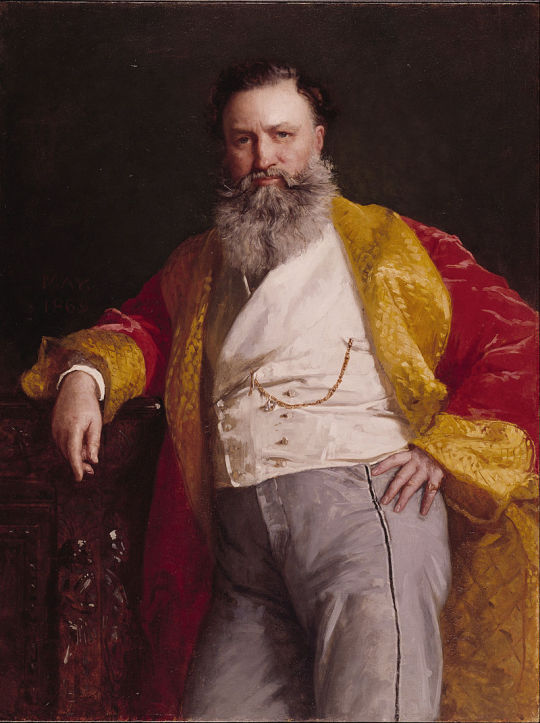
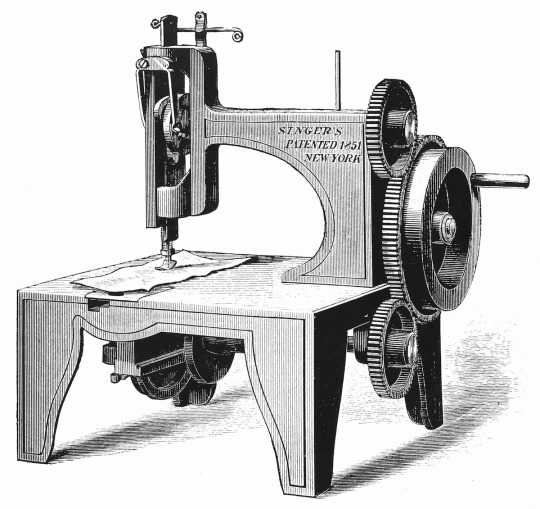
Issac Singer didn't invent the sewing machine, but he did invent the first commercially successful sewing machine. The earliest sewing machine-like device was invented by Berthelemy Thimonnier in 1830, and was used to mass manufacture uniforms for the French army. It could sew quickly, but it was only capable of making a basic chain stitch that unravelled easily. It was powered by a hand crank and the needle moved side to side. In 1831, 200 tailors rioted, destroying his machinery and burning his factory. Others made their own versions of the device, improving the technology as they went along. American Walter Hunt was so afraid of creating mass unemployment among seamstresses with his device that he didn't seek a patent.
Eventually, in 1846, Elias Howe patented the first practical sewing machine, having worked on it obsessively for years, costing him his health and keeping his family in debt. His finished machine was capable of 250 stitches per minute, compared to the typical 40 stitches a minute that could be done by hand. However, the machine cost $300, making it prohibitively expensive for anything that wasn't at an industrial scale.
Then Isaac Singer came in with a needle that was powered by a foot treadle and went up and down instead of sideways. Howe, meanwhile, lost his American workshop in a fire and got swindled out of his British royalties. He had to sell his father's farm to make up the money to sue Singer. After years of struggle, a judge finally sided in his favor. Eventually, Howe and Singer pooled their patent, and Howe was finally making a decent amount of money off of the invention that had cost him so much.
But Singer's name was the one that would become synonymous with sewing machines, because he was the one who mass manufactured a sewing machine that was affordable by the average housewife. Singer was eventually able to expand into the European market, becoming one of the first American multinational companies.
171 notes
·
View notes
Text
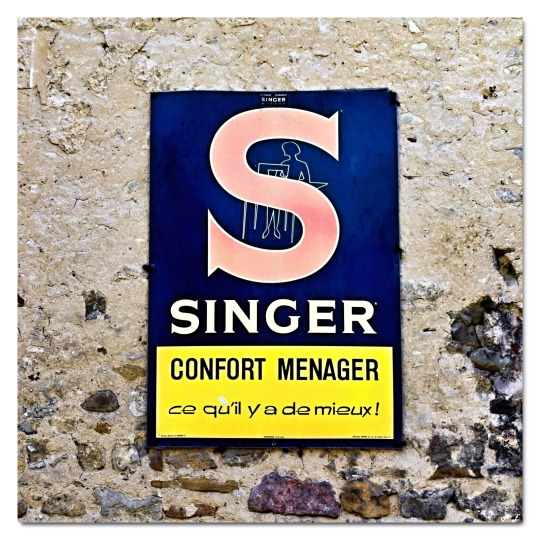
En minuscule en haut de la plaque on lit : “Affichage permanent Singer, de janvier 1970 à décembre 1979”. La Singer Sewing Machine Company est fondée à New-York, en 1851, par Isaac Merritt Singer suite aux améliorations importantes qu’il apporte aux machines à écrire et aux machines à coudre inventées par Barthélemy Thimonnier (qui meurt dans la misère en 1857.) En 1906, le quartier général de la société se trouve au Singer Building, conçu par l'architecte Ernest Flagg. La tour Singer était à l'époque la plus grande tour du monde. Sa démolition, en 1967, est intervenue en même temps que celles de deux autres monuments historiques : Penn Station et l'hôtel Waldorf-Astoria, à la veille de l'expiration du délai de soixante-dix ans d'ancienneté qui aurait permis de les protéger. Cette perte patrimoniale est aujourd'hui considérée comme irréparable par les historiens de la ville. L'usine Singer de Clydebank construite en Écosse en 1885 devient au début du 20e siècle la plus importante usine de machines à coudre au monde. Après la Seconde Guerre mondiale, les machines à coudre Singer ne dominent plus le marché mondial. Elles sont d'abord concurrencées par les produits de firmes allemande (Pfaff), suisse (Elna) et italienne (Vigorelli). Puis arrivent les machines à coudre japonaises vendues à des prix particulièrement compétitifs. Singer tente de résister en lançant en 1954 de nouveaux modèles plus légers, techniquement avancés et aux couleurs attrayantes. En 1989 l’entreprise est rachetée par la firme chinoise Grande Holdings Ltd qui s'offre également Pfaff en 1997. En 1999 Singer est mise en liquidation judiciaire à New York. Aujourd’hui, Singer fait partie du groupe SVP Worldwide qui possède également les marques Pfaff et Husqvarna Viking depuis février 2006.
4 notes
·
View notes
Text
What things to Look for in a New Sewing Machine
In the event that you talk to anybody who sews, they enables you to realize that the sewing machine is an ideal effective innovation of the last 200 decades, by far. It allows you to make your own personal apparel, bedding, quilts and decorative objects quickly and skillfully. It generates quick function of stitching items of substance together. With the advancements and development to the sewing machine over time, it has taken on a new dimension in crafting.
The thing that was after an excellent time preserving gadget for the ladies of yesteryear for sewing and sewing, the machine is now capable of complex, remarkably colored embroidery, also many other creative tasks and is just a wonderful time saver in comparison to performing any of these projects by hand. The number of choices are limitless with the developments and computerization of the fun sewing machines sewing machines .
Since each person has their very own ideas and wants because of their sewing jobs and projects, there's not the overall "perfect machine " for all. Do you embroider? If not you don't require this option on your own machine. Embroidery models can perform some fantastic work, but may also be expensive and this method will be useless for you if you're perhaps not planning on doing embroidery.
You will need to take the time to do a emotional catalog or with pen and paper create out which kind of tasks you are thinking about performing, maybe you've a favorite TV sewing show you view and you desire to create those projects, what types of sewing do they do? Do you want to be sewing numerous layers of fabric, leather, or other resources? Sewing on keys, performing quilting sections, performing quilts, sewing carpets, reupholstering, etc., etc. By creating an inventory you may have an excellent notion of the sewing machine which will most useful suite you.
Are you currently new to sewing ? Are you experiencing buddies or does your mom or grandmother sew ? Great, question them should they will reveal about their machine and their likes and dislikes of these machine. Does it do everything they want it to complete or are there improvements they wish they had. Frequently some one that is common with their machine will be ready to share with you if they like their machine , or if I just realized I could have get a different machine or I would 've got usually the one with such and such addition that this machine does not need and it can not be included to. Bring your list with you. Would a machine like mom's or grandma's fit your needs, how about your pals? This is a long-lasting relationship, therefore take your time and choose correctly, you will be pleased if you do.
Ahead of the creation of the sewing machine , all clothing, home furnishings and also agricultural sacks were made by hand. The group of activities and inventions that generated what we recognise today as a sewing machine were a very important section of history. Here's an breakdown of some the inventors, their contributions and exactly how we finally produced truth the desire of a machine that could take the labour out of sewing.
The initial individual to use for a patent for a sewing machine was a English founder named Thomas Saint in 1791, nevertheless his machine wasn't identified to possess ever been developed. The first real functioning sewing machine to be shown as such to the world was in 1814 by an Austrian target Josef Madersperger, even though number apparently working machine is considered to attended from his work.
In 1830 Barthlemy Thimonnier from France patented a functional machine that has been capable of sewing right seams with a sequence stitch. By 1841 he'd a factory of those products but it absolutely was allegedly sabotaged and burnt down by French tailors, they certainly were described to own seen the existence of the machines as a threat to their careers as opposed to the priceless function software that the sewing machine came to be. Thimonnier ultimately stumbled on Britain with a machine and was obviously the very first person to provide working devices on the market, he also ran a dress factory.
An National Walter Hunt developed the initial lockstitch sewing machine in 1833. This machine used 2 spools of bond by having an attention directed needle just like products of today, nevertheless the machine needed resetting too often to be viable. Yet another American, John Greenough, made a functional machine in which the needle transferred completely through the material but was struggling to generate enough interest to produce the machine for resale.
Elias Howe created a machine similar compared to that made by Walt Search in 1845. There have been several improvements which built his machine the most sensible however although he struggled to achieve financial backing. Following attempting to market his machine in England he go back to the US to locate lots of people had taken his thought and providing related models that apparently infringed his patent.
Isaac Merritt Artist was an engineer who made a decision to overhaul the circular sewing machine. His machine used a traveling taxi rather than a rotary one; the hook was installed vertically and involved a presser foot to put on the cloth in place. It'd a fixed supply to put on the hook and also involved a basic tensioning system. Singer got an National patent for his machine in 1851, he created a base pedal or treadle, for use along with his machines. Howe needed Performer and a few the others to court over patent breaches and was awarded some compensation.
An interesting fact, if you find these specific things fascinating, is that the initial hire-purchase type payment system is noted to own first been brought about by Performer and a attorney called Edward Clark, and was caused in order to allow visitors to afford to buy their sewing machines. The success of the Performer sewing machines tends to be credited more to the revenue techniques utilized by Singer and Clark, as opposed to such a thing outstandingly various with their machines.
Through the years other people and unions produced changes and manufactured more machines. There were higher than a several squabbles over patents and threats to sue. Allen N Wilson and Nathaniel Wheeler developed a calmer simpler machine underneath the Wheeler and Wilson Organization manufacturing products in the 1850s and 60s. As more individuals entered the style and production of sewing machines'The Sewing Machine War'came to exist as everyone attempted to guard their own rational house, ultimately Performer, Howe, Wheeler and Wilson and Grove and Baker got together with their patents building'The Sewing Machine Mix'in 1856. This pushed the other manufacturers to do points their way and spend a certificate cost for the privilege.
Knitting devices were first observed in 1877 in the shape of a crochet machine , this was created by a Joseph Merrow. This machine was in reality the first'overlock' sewing machine and The Merrow Machine Business however make overlock devices today.
In 1885 Singer patented the'Artist Vibrating Shuttle' sewing machine applying Allen T Wilson vibrating shuttle, this machine was more conform at lockstitching, exchanging the oscillating shuttles and continuing use till the circular shuttle products changed them.
1 note
·
View note
Photo
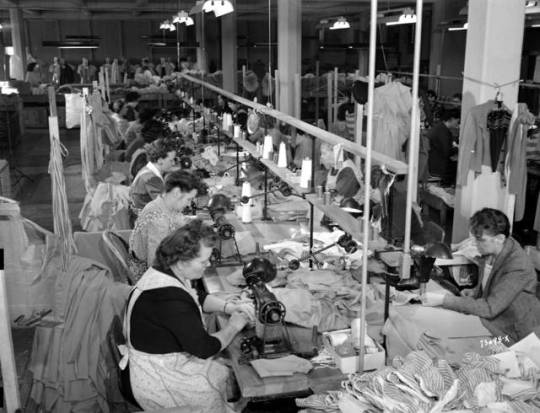
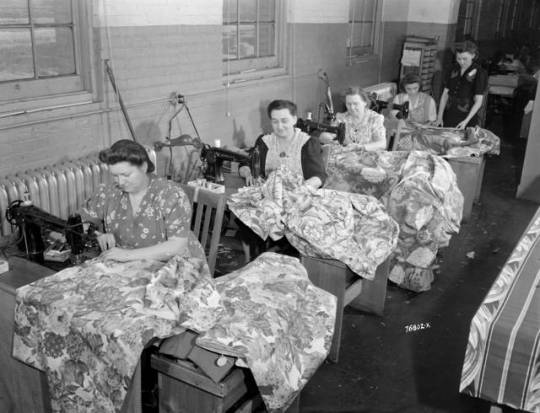
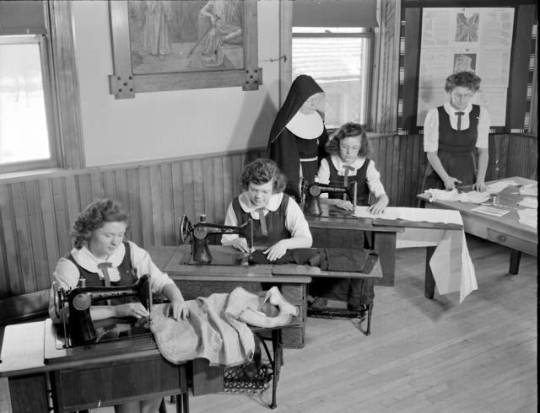
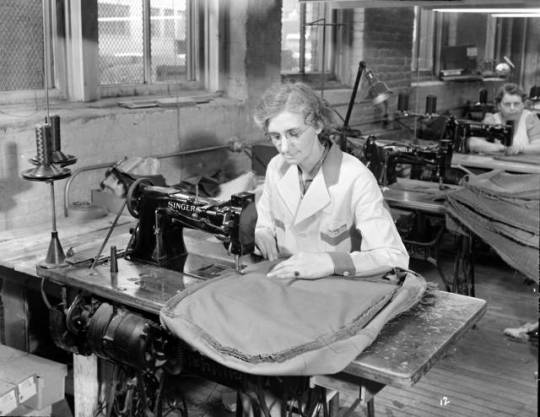
June 13th is Sewing Machine Day!
Sewing machines revolutionized not only sewing but consumerism more broadly. Generally considered to have been first invented in 1790 by Thomas Saint, the design of the first sewing machines developed over the course of the early 19th century before the first practical and widely used machine was created by Barthélemy Thimonnier in 1829 (patented in 1830).
Sewing machines cut production times by a huge margin, opening up time for leisure as women’s role in household management decreased. The burden of clothing production moved to factories, leading to an initially negative side effect of the invention, by taking many jobs from seamstresses. However, the positives of the sewing machine and industrial production quickly outweighed the negatives. Factories were able to employ many men, women, and children, which, when combined with the faster production times, meant an increased supply of clothing and other sewn goods, decreasing the overall cost of materials. Factories were able to produce more than just clothing, expanding into household goods, flooding the ever-growing market with greater variety. People went from having only one or two sets of weekday or work clothes and their Sunday best, to a larger wardrobe for a fraction of the cost.
The above photos come from the James Blair Murdoch Photo Collection (UWM Mss 131). The collection consists of approximately 2600 photos, both negatives and prints, primarily taken by Murdoch. Many of the photos are related to area businesses, such as advertising and insurance agencies, department stores, manufacturing industries, and service stations. The collection can be viewed in person in the Archives or online through our Digital Collections.
These photos date from the 1940s and capture a variety of individuals using sewing machines. The first photo shows women sewing in a factory; Murdoch’s notes associated with the photo indicate that the women worked in the Mayer Building in Milwaukee’s Third Ward. The second photo depicts women sewing items in the Boston Store. The third photo is less industrial, depicting three girls sewing while being supervised by a nun. In the background, there is a poster hanging on the wall that gives instructions related to different sewing techniques like darts and other finishes. The final photo shows a woman sewing an upholstery cushion, demonstrating the kind of household materials that could be made with the sewing machine.
This Sewing Machine Day, take a look at your wardrobe or around your house and think about how much work might have been required to sew everything by hand. Maybe take the opportunity to give sewing a shot – whether by hand or by machine. It’s a useful skill to have, and fun too. Check out the James Blair Murdoch Photo digital collection to see more photographs related to Milwaukee’s businesses and industries.
-Samantha Dickson, Archives Graduate Intern
#uwm archives#sewing#sewing machine day#sewing machine#James Blair Murdoch#digital collections#1940s#clothing#sewing history#milwaukee businesses#Milwaukee#milwaukee history#archives#women at work
17 notes
·
View notes
Text
Le « silence « de la campagne électorale s’applique à tous
TOUT LE MONDE EST CONCERNÉ
Il est nterdit de distribuer des tracts, tenir des réunions publiques ou même commenter et diffuser des sondages ou des résultats le temps du week-end précédent le premier tour de l’élection.
La période de réserve électorale s’applique-t-elle aussi aux particuliers ?
par Marie Thimonnier le 9 avril 2022 Libération
Question posée le 8 avril
Bonjour,
Vous nous…
View On WordPress
0 notes
Audio
Prior to the invention of the sewing device, all apparel, decor and also agricultural sacks were sewn by hand. The collection of events and innovations that resulted in what we identify today as a stitching device were an extremely vital part of background. Right here is an overview of some the inventors, their contributions and just how we lastly made fact the dream of a maker that could take the work out of sewing. Thimonnier at some point pertained to England with a machine as well as was evidently the first individual to use functioning machines available, he likewise ran a garment factory. Howe took Singer and also a few others to court over license violations as well as was granted some compensation Best Sewing Machines. Over the years other individuals and partnerships brought renovations and also manufactured much more machines. Visit https://sewinghoo.com/
0 notes
Photo

5 juillet 1857 : mort de Barthélemy Thimonnier, inventeur de la machine à coudre ► https://j.mp/2WE3SwT Les broderies au crochet que les fabriques de Tarare, dans les montagnes du Lyonnais, faisaient exécuter dans les montagnes du Lyonnais et du Forez lui suggérèrent l’idée de construire une machine pouvant à la fois broder les étoffes et coudre les vêtements
#CeJourLà#5Juillet#Thimonnier#Inventeur#Machine#Coudre#Couture#Inventions#Broderie#Vêtements#Étoffes#Tissus#Biographie#histoire#france#history#passé#past#français#french#news#événement#newsfromthepast
2 notes
·
View notes
Text
Lịch sử đệ nhất máy may Singer
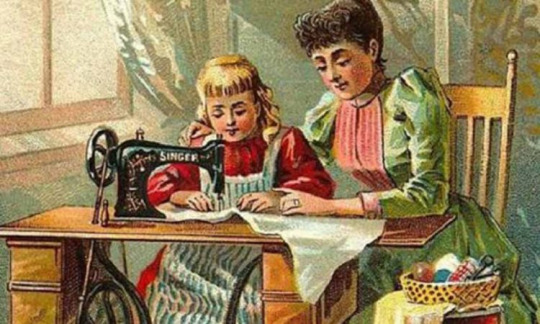
Một nhà thám hiểm, khi đi ngược dòng sông Trường Giang, Trung Quốc, đã đến ngôi làng nhỏ và hẻo lánh trong vùng đồi núi của Tây Tạng. Nhà thám hiểm tự nhủ: “Trong một thôn xóm nguyên thủy và cách xa mọi thứ như thế này, hẳn là không một tiến bộ khoa học kỹ thuật vươn nào đến được”.
Thế nhưng, ngay lúc ấy, anh nghe âm thanh ro ro, rì rào rất quen thuộc. Tiến gần đến nơi phát ra tiếng động, anh ta ngạc nhiên khi thấy một phụ nữ bản xứ cúi trên sàn của túp lều bằng đất bện, đang cố gắng may chiếc váy bằng máy may Singer.

Singer là nhãn hiệu máy may được chế tạo nhiều nhất trên thế giới. Thời ấy, hãng Singer in tờ quảng cáo bằng 54 thứ tiếng và, tại nhiều quốc gia, có vẻ như Singer là biểu hiện duy nhất của nền công nghiệp hiện đại. Ở Congo, có một nhà máy sản xuất áo sơ mi chỉ trang bị duy nhất máy may nhãn hiệu Singer và một chi nhánh của hãng Singer đặt tại Na Uy, gần Bắc cực.
Ở một số vùng của đất nước Ấn Độ, nhãn hiệu Singer rất phổ biến. Tại đây, các tòa nhà của nhà máy sản xuất máy may Singer to lớn hơn cả các tòa đại sứ và tổng lãnh sự các nước. Gần đây, bưu điện Ấn Độ đã chuyển một lá thư đến người nhận ghi địa chỉ ngoài bì thư như sau: “Kính gởi đến ngài Tổng lãnh sự Hoa Kỳ, kế bên hãng máy may Singer ở Calcutta”.


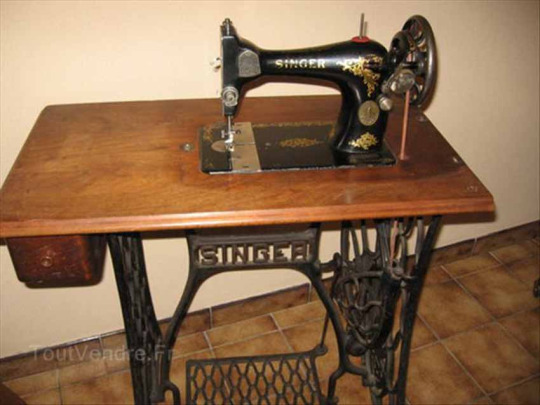
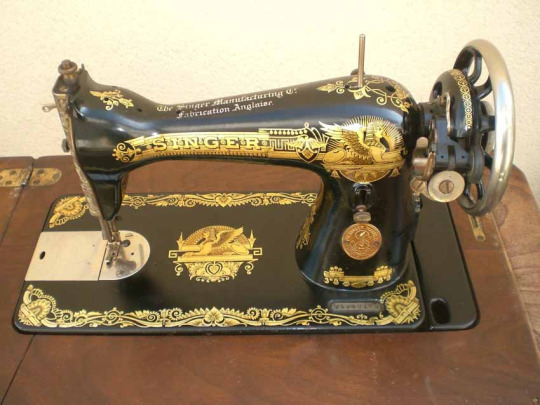
Được học may với chiếc máy may Singer, nhà lãnh đạo Gandhi đã hủy bỏ một quyết định cấm chỉ đối với ngành công nghiệp phương Tây nhằm chiếu cố lợi ích của chiếc máy may mà ông cho là “một trong những công cụ quí hiếm thực sự có ích, chưa từng được chế tạo cho đến nay”.
Douglas Alexander, người Canada, giám đốc hãng máy may Singer trong suốt 44 năm, đã mô tả bằng một câu duy nhất phương pháp làm việc của hãng: “Chúng tôi rất lấy làm hài lòng sản xuất ra máy may Singer, quảng bá ra thị trường, bán nó và tái đầu tư để chế tạo ra chiếc máy may mới, tối tân hơn”. Một câu rất đơn giản giải thích phương pháp sản xuất và tiêu thụ trên 100 triệu máy may, giúp tiết kiệm được hàng triệu giờ lao động của các bà mẹ trong các gia đình trên toàn thế giới. Thành lập năm 1851, hãng máy may Singer đã không ngừng đạt được từ thành công này đến thành công khác.
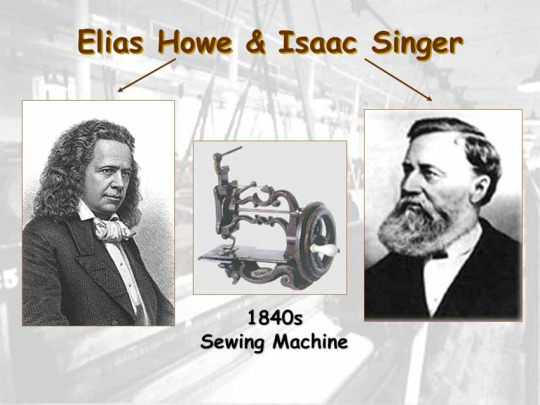


Isaac Singer
Isaac Singer, người đã lấy tên mình đặt cho hãng, sinh ra ở Hoa Kỳ, trong một gia đình người Đức nhập cư. Một hôm, Isaac mượn số tiền 40 đô la làm vốn để chế tạo chiếc máy may đầu tiên vào năm 1850 tại Boston. Thoạt đầu, chiếc máy may gặp trục trặc kỹ thuật và không chịu hoạt động. Nản lòng, Isaac định bỏ cuộc, nhưng ông sực nhớ có một chi tiết ông hiệu chỉnh chưa chuẩn. Sau khi khuyết điểm được khắc phục, máy may vận hành trơn tru. Đây là cái máy may đầu tiên cho phép may một cách liên tục. Vài năm trước đó, một người Pháp tên Barthélémy Thimonnier đã chế tạo một chiếc máy may để may quân phục. Do ganh tị, các thợ may đã đập bể máy may này ra từng mảnh. Mặt khác, vào năm 1834, Walter Hunt, người sáng chế ra kim băng và cổ áo bằng xeluloza, đã chế tạo ra một máy may tương tự, nhưng ông đã bỏ nó vào góc xó vì con gái của ông cho rằng máy may sẽ làm giảm số lượng thợ may khiến họ rơi vào cảnh thất nghiệp.

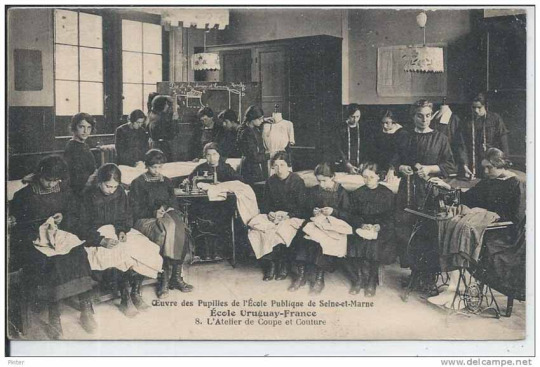
Năm 1846, Elias Howe, một người Mỹ ở New England, một vùng thuộc miền Đông Bắc Hoa Kỳ, đã nhận được giấy chứng nhận sáng chế ra một chiếc máy gồm một con thoi và một cây kim đầu có một lỗ nhỏ. Khi Singer và hai nhà sáng chế khác cho ra đời những chiếc máy may hoàn chỉnh, Elias Howe kiện họ ra tòa. Trong phiên tòa, có ý kiến nêu lên rằng nhà sáng chế không thể chế tạo máy may mà không có con thoi và cây kim có lỗ. Vả lại, mỗi lần may, máy may do Howe sáng chế chỉ may được một đường may dài chừng vài centimét, do đó không có giá trị về kinh tế nếu không được cải tiến như các máy may của bên bị đơn.
Thế là cả 4 nhà sáng chế gởi đơn thưa kiện và tấn công lẫn nhau trong một chiến dịch quảng bá sôi nổi được báo chí lúc bây giờ đặt tên là “cuộc chiến máy may”. Cuộc tranh cãi kết thúc với sự ra đời của tập đoàn sản xuất máy may đầu tiên của Hoa Kỳ. Tập đoàn được quyền thu một khoản tiền bản quyền là 15 đô la trên một máy may được sản xuất. Số tiền này được chia cho bốn nhà sáng lập, trong đó Elias Howe nhận được một phần cao hơn 3 người kia. Tập đoàn tồn tại, nhưng số tiền bản quyền ngày một giảm đi, và kết thúc vào năm 1877, năm mà bằng sáng chế cuối cùng hết giá trị. Cùng lúc đó, 24 công ty mới thành lập được phép sản xuất máy may.
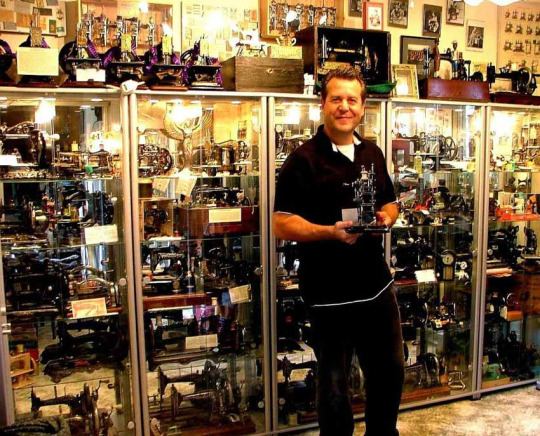

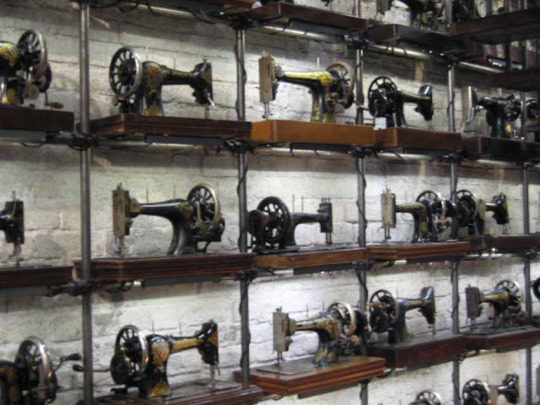
Những chiếc máy may Singer đầu tiên là những máy may sử dụng trong nền công nghiệp nặng. Đến năm 1856, một máy may có mẫu mã nhỏ, gọn nhẹ hơn được chế tạo sử dụng trong gia đình giúp cho các bà nội trợ có thể hoàn thành chỉ trong 1 giờ công việc may vá mà trước đây họ phải mất 13-14 giờ. Nhưng giá bán 159 đô la/một máy may là quá cao bởi thu nhập bình quân của một gia đình lúc bấy giờ là 500 đô la/năm! Để khắc phục nhược điểm này, công ty Singer đã quyết định áp dụng kiểu thanh toán “bán trả góp”: lần đầu người mua trả 5 đô la tiền mặt, sau đó trả tiếp 3 đô la/tháng cho đến khi trả đủ số tiền. Đây là kiểu “bán trả góp” nguyên thủy mà sau này được áp dụng rộng rãi trong nền kinh tế thế giới.
Chẳng bao lâu sau, máy may Singer được xuất khẩu ra nước ngoài. Năm 1855, một kiểu mẫu của máy may Singer được trao huy chương vàng trong cuộc triển lãm quốc tế tại Paris. Tiếp đến, máy may Singer được quảng bá đến Rio de Janeiro, lúc bấy giờ là thủ đô của Brazil. Đến năm 1861, dù nền kinh tế Hoa Kỳ phát triển rất tốt, số lượng máy may Singer xuất khẩu đã vượt qua số lượng tiêu thụ tại thị trường trong nước.
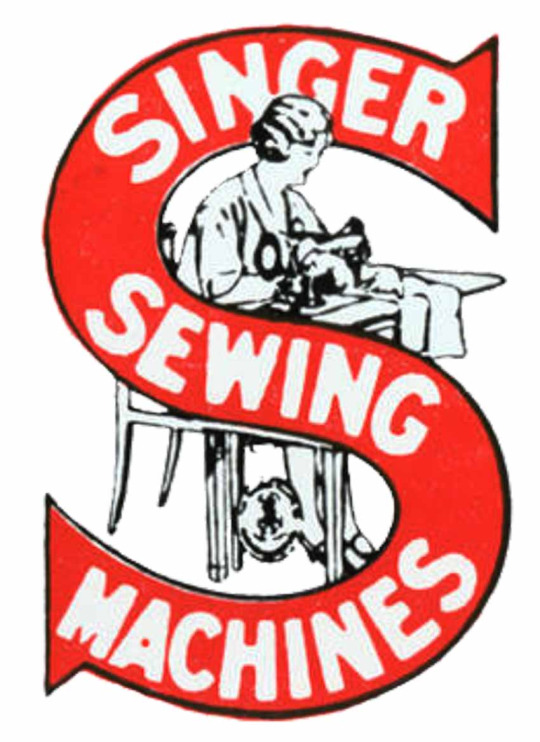
Thời ấy, Singer là công ty có quan hệ thương mại với nhiều nước nhất trên thế giới. Thời gian đã chứng minh hệ thống mua bán và cách thanh toán linh động đã thành công bền vững. Tại Manila, thủ đô Philippines, trong thời Thế chiến thứ hai, toàn bộ số liệu, hóa đơn lưu trữ của Singer đã bị tiêu hủy. Thế ma, khi hòa bình lập lại, 50.000 khách hàng đã tự nguyện tiếp tục trả góp phần tiền còn lại! Chính tính trung thực của những khách hàng nhỏ này đã giúp Singer có đủ vốn để phát triển và chia lợi tức cổ phần trong suốt 87 năm liên tiếp.
Những người đại diện bán máy may Singer phải vừa là thợ máy, vừa là người thu tiền, vừa là thợ may giỏi có năng khiếu về mặt. Các nhân viên của Singer đi khắp các nẻo đường châu Phi để giới thiệu sản phẩm và săn tìm khách hàng. Một hôm, tại một ngôi làng của người bản địa, các bà nội trợ chê máy may phát ra tiếng động quá to là do “chất lượng kim loại không tốt”. Đại diện bán hàng của Singer liền điều chỉnh tiếng máy đúng theo yêu cầu. Tại Indonesia, một nhân viên chào hàng của Singer, dù bị thương nặng trong một tai nạn, cũng đã bán được 8 chiếc máy may cho các y bác sĩ của bệnh viện, nơi anh điều trị.
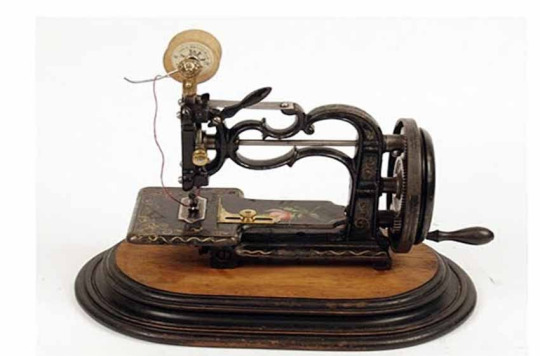
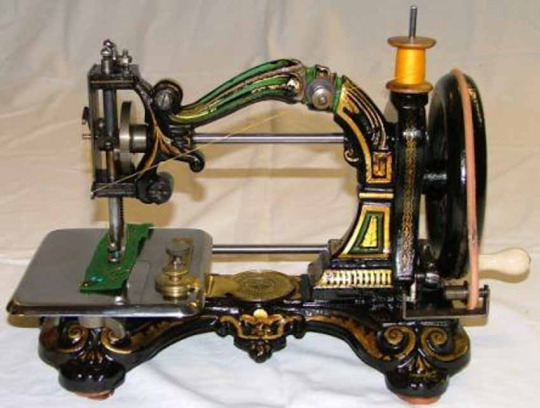
Tại Nhật Bản, chiếc áo kimono thường được may với các mũi khâu thật to để có thể dễ dáng tháo ra mỗi khi giặt. Một đại diện của Singer đã đề xuất máy may có thể điều chỉnh mũi khâu thưa và nhặt để làm hài lòng khách hàng người Nhật. Sau này, với sự trợ giúp của hầu tước Okuma ở Nhật Bản, công ty Singer đã khai trương trường dạy may đầu tiên tại Nhật Bản, dạy hàng ngàn phụ nữ Nhật may Âu phục. Nước Nga đồng ý nhập khẩu máy may Singer, sau khi người đại diện năng động của công ty đã sử dụng máy may Singer để may 250.000 tấm lều dành cho quân đội Nga hoàng.
Những người đại diện công ty Singer không bao giờ đi giới thiệu hàng mà không mang theo quà tặng như bưu thiếp, kính soi mặt cầm tay, đê may, thước đo, quạt tay, lịch… Singer là công ty đầu tiên trong lịch sử đã bỏ ra chi phí quảng cáo lên đến 1 triệu đô la/năm.
Nhãn hiệu Singer mang hình chữ S được biết đến ở tất cả các nước trên toàn cầu. Phu nhân các nhà lãnh đạo quốc gia là người luôn mặc quốc phục ở bên cạnh chồng trong các buổi tiếp tân. Thỉnh thoảng các phụ nhân được sửa lại mái tóc, nối dài hoặc rút ngắn chiếc váy sao cho lúc nào cũng hợp thời trang. Ở Ấn Độ, một đại diện đầy óc sáng tạo của Singer đã làm rạng danh máy may Singer nhờ một ý tưởng tài tình. Anh ta cho in chữ Singer trên hàng ngàn mét vải bông rồi bán ra với giá rẻ hơn giá vốn. Thế là hàng trăm người Ấn Độ mặc khố Singer đi khắp phố phường, tạo thành những tấm bích chương quảng cáo di động cho công ty.

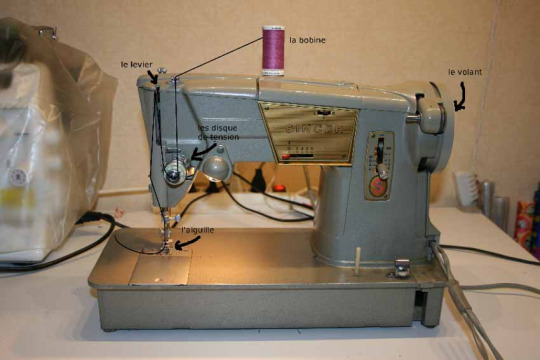
Ngay từ đầu, Singer là công ty tự sản xuất. Gỗ dùng để làm thùng bàn máy được trồng trong những cánh rừng của công ty, được cưa xẻ trong những xưởng cưa của công ty và chuyển đến nhà máy trên những toa tàu hỏa cũng của chính công ty. Khởi đầu từ việc đúc gang, các bộ phận rèn thô, các sợi kim loại, Singer đã tự sản xuất 4.000 mẫu máy may và 8.400 mẫu kim máy may. Singer cũng tự sản xuất động cơ điện cho bàn máy may điện. Ấn tượng hơn nữa là Singer bán trực tiếp sản phẩm đến khách hàng thông qua hàng ngàn trường dạy may nằm rải rác trên khắp thế giới. Sau cùng là Singer có hệ thống chi nhánh trên toàn cầu, sẵn sàng sửa chữa, bảo trì và cung cấp bộ phận thay thế.
Năm 1867, tại Scotland, Singer sản xuất chiếc máy may đầu tiên ngoài lãnh thổ Hoa Kỳ. 15 năm sau, George Ross McKenzie lên kế nhiệm của Clark, trong vai trò người đứng đầu công ty Singer. Sinh ra ở Scotland, George Ross McKenzie rời quê hương khi còn rất trẻ, nay lại trở về Scotland để xây dựng nhà máy sản xuất máy may Singer lớn nhất thế giới tại thị trấn Clydebank thuộc thành phố Glasgow. Bàn máy may Singer có vai trò cực kỳ quan trọng đối với Clydebank đến độ hình của nó được đưa vào huy hiệu của thị trấn.

Mẫu mã máy may và kim may Singer đa dạng và phức tạp đến độ quyển danh mục đầy đủ của nó cân nặng đến 5kg. Chiếc máy may Singer dành cho trẻ em có kích thước nhỏ nhất có thể đặt vào lòng bàn tay, nhưng vẫn có thể may được một cách hoàn thiện. Chiếc máy may Singer khổng lồ nhất, nặng đến 1 tấn, được dùng để may dây curoa băng tải dày 4 phân. Chiếc máy may Singer đắc tiền nhất trị giá đến 3.000 đô la, có khả năng thực hiện đường may hình chữ chi trên vải làm bằng lông lạc đà được dùng trong sản xuất dầu lanh và bông.
Điện và sự hoàn thiện của các bạc đạn đã giúp làm tăng năng suất cho máy may Singer rất nhiều. Một máy may dùng trong gia đình có thể thực hiện đến 1.500 mũi may/phút. Nhiều mẫu máy may công nghiệp có thể thực hiện đến 5.000 mũi may/phút. Dù vậy, máy may có thể được dừng ngay tức khắc mà không gây bất kỳ nguy cơ nào. Một số máy may Singer còn có hệ thống tra dầu tự động và kim may được làm mát bằng dòng không khí.
Một trong những mẫu máy may mới nhất của Singer thậm chí không có kim may. Đó là chiếc máy may lắp ráp các miếng vải bằng chất dẻo thành áo đi mưa, rèm tắm, quả khí cầu… Những miếng vải bằng chất dẻo được hàn dính kết vào nhau bằng nhiệt tỏa ra từ hai điện cực tần số cao. Nhiều mẫu máy may Singer khác được dùng để đóng tập các quyển sách, may vớ ni lông và may miệng các bao hàng.

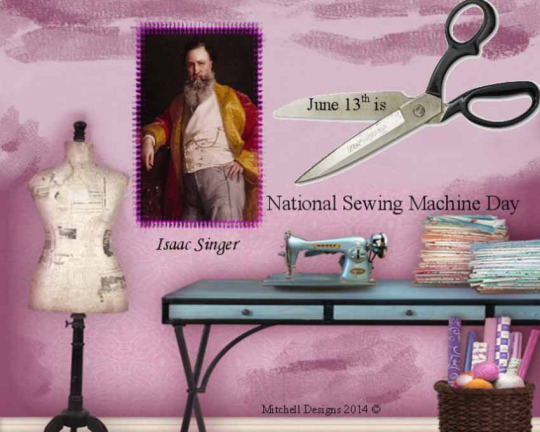
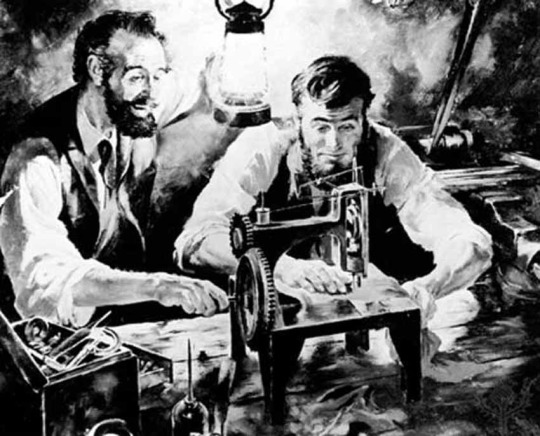
Đến đầu thế kỷ 20, thị trường máy may Hoa Kỳ dường như bão hòa. Quần áo may sẵn và yêu cầu phụ nữ đi làm việc bên ngoài đã góp phần tách họ ra khỏi công việc nội trợ. Do đó, Singer đã tập trung mọi nỗ lực vào thị trường quốc ngoại và giảm chi phí quảng cáo đáng kể ở Hoa Kỳ. Nhưng vào thời kỳ khủng hoảng 1930, phụ nữ Mỹ gặp khó khăn về tài chính và tìm niềm vui trong việc may vá, nhờ đó mà chiếc máy may đã hồi phục lại thời vàng son như chưa từng bị thất bại.
Trong một thời gian dài, Singer là chiếc máy may được hàng triệu gia đình trên toàn cầu chào đón về nhà. Và như một trong những vị giám đốc của Singer từng nói: “100 năm đầu tiên kể ngày thành lập là thời kỳ mà chúng tôi phải nỗ lực hết mình. Hiện nay chúng tôi không còn gì phải lo sợ, trừ phi phong trào khỏa thân bùng nổ trên toàn cầu”.
0 notes
Text
Steel manual aseptic packaging
STEEL MANUAL ASEPTIC PACKAGING >> DOWNLOAD LINK
vk.cc/c7jKeU
STEEL MANUAL ASEPTIC PACKAGING >> READ ONLINE
bit.do/fSmfG
uht packaging materialaseptic carton packaging
non aseptic packaging
history of aseptic packaging
aseptic process equipment
aseptic packaging solutions
aseptic packaging journal
principle of aseptic packaging
Cleaning.of.an.aseptic.system.is.generally.with.a.clean-in-place.system. that. is. is. determined.through.manual.inspection,.or.by.observing.chartsSince, relatively large masses of metal are often present in aseptic filling and packaging systems, high temperatures and relatively long holding periods Aseptic packaging is also used with metal cans, large plastic or metal Ileana Slavin, John P. Schell, in Human Stem Cell Manual (Second Edition), 2012 Our aseptic processing and packaging solutions keeps food safe for at least of the 1800's and by 1839, tin-coated steel containers were widely in use. This machine consists of stainless steel frame, electric control system, quantitative filling system, vacuum pumping system,capping system. Parameter of BIB Aseptic plastic cups, bag-in-box, and pouches are far less expensive than the metal can, so very few other Dole canning systems have been installed in the last Thimonnier's standard aseptic packing technology in its THP models ensures The THP models are built from stainless steel, including their frames (304L
https://sagawedug.tumblr.com/post/666929457946361856/engineering-electromagnetic-fields-and-waves-johnk, https://hocudogujuge.tumblr.com/post/666899292654534657/e-pl5-english-manual-fujitsu, https://vajefehefujo.tumblr.com/post/666961350004703232/advantage-for-cats-over-4kg-instructions, https://sagixegemuve.tumblr.com/post/666902759469121536/it2406-soa-lab-manual, https://ruluvogotu.tumblr.com/post/666963505226858496/tefal-manuals-ink.
0 notes
Text
A la machine – Yamina Benahmed Daho - L'arbalète, Gallimard
A la machine – Yamina Benahmed Daho – L’arbalète, Gallimard
C’est en voulant connaître l’origine de la machine à coudre que Yamina Benahmed Daho découvre l’existence de Barthélémy Thimonnier. Qui se souvient de lui, tailleur et inventeur de la machine à coudre?
Barthélémy Thimonnier a travaillé toute sa vie pour inventer une machine afin d’avoir et d’offrir à sa famille une vie meilleure. Sa première invention, la première machine à coudre date de 1829,…
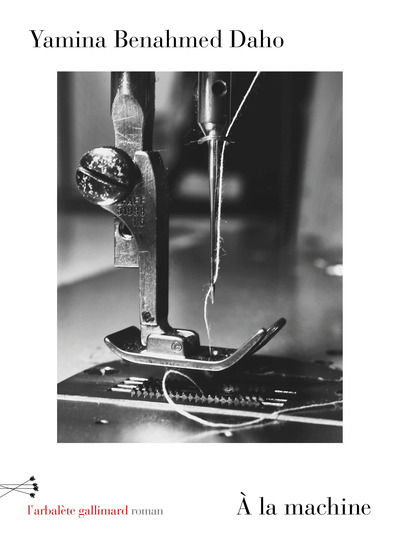
View On WordPress
0 notes
Text
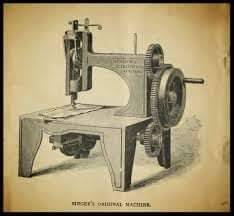
*आज ही के दिन 1842 में पहली सिलाई मशीन का पेटेंट हुवा था ।*
On today *21st Feb 1842 John Greenough patented the first sewing machine in the U.S.*
Today we talk about the history of the Sewing machine.....
~ In the year 1841, business partners Archibold and Newton invented the eye-pointed needle and also created the use of two surfaces to keep fabric in an appropriate position.
~ The sewing machine is still a relatively new invention, but the act of sewing itself has been a part of human culture for thousands of years.
~ Long before the hum of the sewing machine, we used needles and our hands to sew things together, be it clothing or other things.
~ The sewing machine was invented in the first Industrial Revolution to streamline work in clothing companies.
~ The invention of the sewing machine is credited to Thomas Saint in 1790.
~ Prior to Saint, Charles Fredrick Wiesenthal, a German engineer working in England, was awarded a patent for the first sewing machine, which was a mechanical device that used double pointed needles.
~ But Thomas Saint was the first inventor to create the first sewing machine design, which was designed to work with canvas and leather material.
~ The only problem was that Saint failed to market or promote his invention.
~ It is believed that he had a working model, but to this day, we have yet to find evidence of one.
The device included practical features, such as a feed mechanism, an overhanging arm, a looper and a vertical needle bar.
~ Saint’s machine used the chain stitch method, which uses just a single thread to make a simple stitch into fabric.
~ A stitching awl was used to pierce the material, and the forked point rod would then carry thread through a hole and hooked underneath into the next stitching place.
~ The machine invented by Saint was designed primarily to manufacture leather goods, like bridles and saddles, as well as canvas, such as ship sails.
~ While a great start, Saint’s invention would need some improvement before it could be used for the purpose we use it for today.
~ Skip ahead to 1874, William Newton Wilson improved on Saint’s drawings after discovering them in the London Patent Office. Wilson made improvements to the looper, and he built a working machine.
~ That machine is now owned by the London Science Museum.
~ Since the first introduction of the sewing machine, the concept of an automatic sewing device has been improved upon several times.
~ James Henderson and Thomas Stone in 1804 built a sewing machine.
~ John Duncan in Scotland invented an embroidery machine shortly after.
~ In 1807, Josef Madersperger developed his own sewing machine, and in 1814, he presented his very first working machine.
~ It wasn’t until 1829 that the first practical sewing machine was invented.
~ French tailor Barthelemy Thimonnier was the brainchild of this invention.
~ Thimonnier’s machine also sewed straight seams just like Saint’s model.
~ The machine is constructed out of wood and used a barbed needle.
~ In 1830, he agreed to work with mining engineer Auguste Ferrand, who then made requisite drawings for the machine and submitted a patent application.
~ The patent for Thimonnier’s machine was submitted in 1830.
~ That same year, he opened the first clothing manufacturing company that used sewing machines to create its clothing. Thimonnier’s company created the uniforms for the French Army.
~ Shortly after, the factory burned down. Reportedly, workers intentionally burned down the factory out of fear that they would lose their job after the patent was issued.
~ Thimonnier’s machine is also exhibited in the London Science Museum.
~ The First Lockstitch Sewing Machine in the U.S.
~ In 1832, Walter Hunt created the first lockstitch machine in the U.S. Hunt’s machine used an eye-pointed needle that carried the upper thread, and a falling shuttle that carried the lower thread.
~ The needle passed through the fabric horizontally to create a loop as it withdrew.
~ The shuttle moved through the loop to interlock the thread. The machine required frequent stopping and resetting, which eventually caused Hunt to lose interest in his machine.
~ Hunt sold inividual machines and never patented his creation.
~ John Greenough in 1842 patented the first sewing machine in the U.S. In the previous year, business partners Archibold and Newton invented the eye-pointed needle and also created the use of two surfaces to keep fabric in an appropriate position.
~ John Fisher in 1844 was the first person to combine all of the elements introduced over nearly half a century into one sewing machine.
~ His invention came shortly before Isaac Merritt Singer’s sewing machine in 1851 and Elias Howe’s machine in 1845.
~ In 1845, Elias Howe created his own sewing machine, which was very similar to Fisher’s. The primary difference was that Howe’s machine held the fabric vertically.
~ After a long stay in England in an attempt to attract buyers of his machine, Howe returned to the United States.
~ Upon his return, he found many people infringing on his patent rights, including Isaac Merritt Singer.
~ How would eventually win the case for patent infringement and was awarded royalties from Singer’s manufacturing of his machines.
~ Isaac Merritt Singer
Singer decided to build a better sewing machine after seeing a rotary sewing machine being worked on in Boston.
~ Singer’s machine included a vertical needle, a presser foot that held the fabric in place, and a falling shuttle. A fixed arm kept the needle in place, and a basic tension system was built into the machine.
~ Singer’s creation combined elements from Howe’s and Thimonnier’s machines. An American patent was granted to Singer for his invention in 1851.
~ Around the time of Singer’s patent, several other people were trying to hop on the sewing machine bandwagon.
~ The Sewing Machine Combination was formed in 1856, which included Howe, Singer, Wilson, Wheeler, Baker and Grover.
~ These companies pooled their patents, so future manufacturers would need to obtain a license and pay a $15 fee for each machine.
~ This arrangement continued until 1877 when the final patent expired.
~ The sewing machine has a long and rich history, and it’s still being improved upon today.
Amit Shukla
Govt. Teacher
Have a nice day 😊
0 notes
Photo
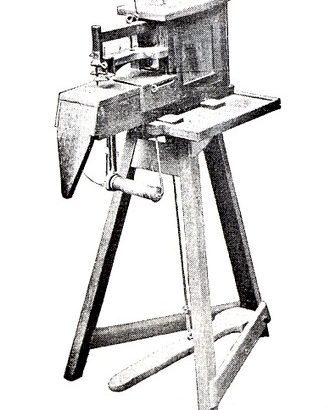
The Story of the Development of Sewing Machines in the 19th Century is becoming more and more fascinating. In 1829 Bathelemy Thimonnier, who was a tailor in France designed the first successful sewing machine and thus became responsible for the beginning of the development of sewing machines in the 19th Century. Read the whole Article here: https://sewing-machine-accessories.co.uk/index.php/2016/12/05/sewing-machines-in-the-19th-century/
0 notes
Text
Sewing Machines

1846 Elias Howe Sewing Machine
Photo Source: Scientific American magazine, Vol. 75, No. 4, July 25, 1896, Munn and Co., New York, p. 72
The sewing machine has an extensive history dating to the eighteenth century. The first sewing machine design is credited to English inventor Thomas Saint in 1790. The design was intended for use with leather and canvas which was useful in manufacturing saddles, bridles, and ships sails. The machine used a single thread to create simple stitches known as a chain stitch. Although a revolutionary invention, the stitch was found to unravel easily, and an entire seam would become undone if one end of the thread were loosened. Saint did not successfully market this invention and, although variations to this original design were created by other inventors, it was not until 1829 that the sewing machine became widely used.
Barthelemy Thimonnier, a French tailor, patented a chain stitch sewing machine similar to Thomas Saint’s invention, in 1830. That same year, he and several partners opened a clothing manufacturing company which utilized these new machines to create uniforms for the French army. The factory was burned, reportedly by employees, due to fear of losing their jobs.
In 1842, John Greenough patented the first sewing machine in the United States, although, the name most often recognized is the Howe treadle sewing machine patented by Elias Howe in 1846. Born in 1816 in Massachusetts, Howe invented what was considered the first practical sewing machine. Unlike the chain stitching machines previously used, Howe’s machine created a lock stitch at the rate of 250 stitches per minute. The lock stitch essentially locks the thread in place as both the upper and lower threads pull through the same hole in the garment.
Although this invention was remarkable, the concept did not immediately catch on and Howe eventually left for Europe to market his new invention. After two years of disappointment, Howe returned to the United States to find that sewing machines were widely used. He also recognized that many of these machines used all or part of his own, patented design. This led to several legal battles, which Howe began to win by the 1850’s.
Howe’s legal battles led to frenzy between sewing machine manufacturers as they all began suing each other for stealing patents. Eventually this led to the “Sewing Machine Combination” which was a pooling of patents between the four major sewing machine manufacturers, Singer, Wheeler & Wilson, Grover & Baker, and Howe.
From the mid 1850’s to the latter half of the 1860’s, Howe was estimated to have earned close to two million dollars from his invention. This was much different from the penniless state he lived in both prior to and during his time in Europe. The Howe sewing machine legacy ended in 1867 when Elias Howe died at the age of 48. Interestingly, his patent ran out this same year.
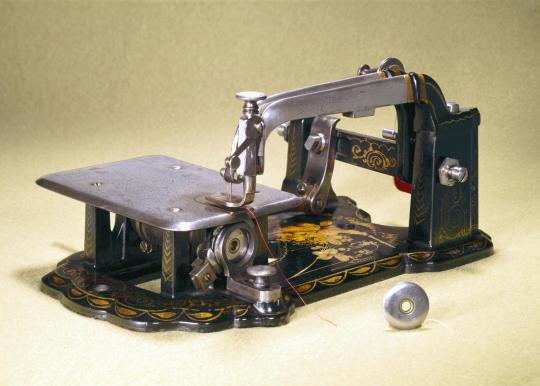
Wheeler and Wilson lock stitch sewing machine, type No.1. The first machine with rotary hook and four motion feed patented by Allen B. Wilson 1851 and 1854 and made in 1866.
Photo Source: Science Museum Group. The first Wheeler and Wilson sewing machine, 1866. 1950-158. Science Museum Group Collection Online. Accessed March 18, 2018. https://collection.sciencemuseum.org.uk/objects/co44770.

Woman sewing with a Singer sewing machine. 1917-1918.
Photo Source: United States Library of Congress's Prints and Photographs division under the digital ID cph.3b01182.
1 note
·
View note
Photo


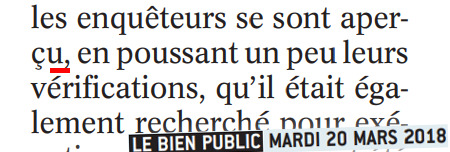

Se rendre compte, c’est en quelque sorte rendre compte à soi-même.
Le pronom se n’est pas COD, le participe passé est donc invariable.
Je me suis rendu compte des a priori* qu'on peut avoir sur quelqu'un
elle ne s'est pas rendu compte de l'accrochage avec le cycliste
*La nouvelle orthographe recommande la soudure et la marque du pluriel pour le nom: un apriori, des aprioris
----
Le verbe pronominal s'apercevoir est employé intransitivement (donc pas de COD) au figuré (S'apercevoir de quelque chose).
L'emploi intransitif montre le verbe pronominal devenu verbe subjectif (dont le sujet ne subit pas l'action exprimée, cf. se souvenir de, se rendre compte de...)
Le participe passé des verbes pronominaux s’accorde en genre et en nombre avec le sujet, sauf si le pronom réfléchi peut être analysé comme complément d’objet indirect (Thimonnier)
les enquêteurs se sont aperçus qu’il était recherché...
Lorsqu’elle s’est aperçue que cette dame sortait...
1 note
·
View note